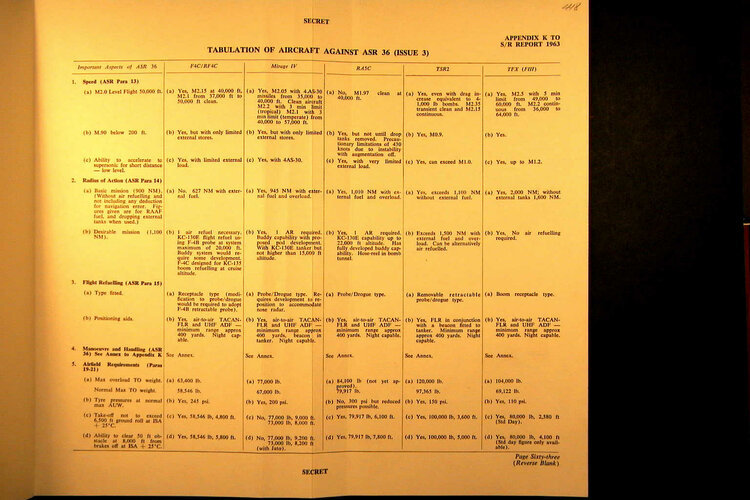Buccaneer S2 already ordered for RN so no need for more than 50 TSR2.
Not necessarily.
When TSR.2 was cancelled IOTL the RN still needed those Buccaneers because the decision to scrap the strike carriers was still a year away. Even then, the plan was that the RN would keep them until 1975 (later brough forward to 1972) and the RAF would use them to form maritime strike squadrons which was an additional role to the one that the 50 TSR.2s were planned for. Which is roughly what actually happened.
50 additional Buccaneers (including 4 for the RAE of which 4 (including one of the RAE aircraft) were cancelled) were ordered for RAF use after the F-111K order was cancelled. These aircraft were ordered to provide the RAF with enough Buccaneers to equip the maritime strike squadrons and the two Buccaneer squadrons in Germany.
ITTL attrition batches of TSR.2s might be ordered instead of the 50 Buccaneers ordered for the RAF.
Bucs are cheaper and better.
If I remember correctly from the RAF AHB narrative for the period, it was estimated that one TSR.2 could do the work of two Buccaneers, which if correct might not make Bucs cheaper or better.
E.g. there's the story about Lord Mountbatten walking around with one photograph of a TSR.2 and five photographs of a Buccaneer saying
"For the cost of one of those we can have five of these!" Maybe the CAS should have put three of the Buccaneer photographs in the nearest waste paper bin and replied
"And two of those re needed to do the work of one of these!"
AFVG still needed to replace Lightnings and conventional role Canberras.
Was it?
For a start, most of the Lightnings were replaced by Phantoms and it can be argued that the two Phantom squadrons that survived the introduction of Tornado ADV replaced the two surviving Lighting squadrons.
The Canberra is somewhat more complicated. The shortish answer is the only Canberras with a purely conventional role were the reconnaissance Canberras because the light bombers in Germany, Cyprus and FEAF had a conventional & nuclear roles. The Canberra light bombers were replaced by a mix of Buccaneers & Phantoms in Germany, Vulcans in Cyprus and the FEAF squadron was disbanded as part of the East of Suez withdrawal. The reconnaissance Canberra squadrons in Germany converted to Phantoms and some became ground attack squadrons, the squadron in FEAF was disbanded as part to the East of Suez withdrawal and the other three reconnaissance squadrons (one UK, one Malta & one Cyprus) kept their Canberras until at least the late 1970s.
Would love to see NATO papers on TSR2. 50 justified by East of Suez so still die in 67 crisis unless NATO needs them. They didn't save F111K.
Using the figures quoted by
@Rule of cool as a bit of fun.
£195 million spent on TSR.2 at cancellation (£125 million actually spend on the project & £70 million cancellation charges)
£425 million estimated cost of the 50 F-111Ks at cancellation.
£620 million total
£610 million estimated cost of 100 TSR.2s (plus 9 prototypes) at cancellation.
Admittedly, the eventual cost of TSR.2 is likely to have been greater (for one things there's inflation) and it's also likely to have entered service even later than estimated in 1965.
One of the things that did for F-111K was the devaluation of Sterling in November 1967 (the
"Pound in your pocket" and all that) which increased the price. Had TSR.2 not been cancelled in 1965 it might have survived the decision to move the East of Suez withdrawal forward from the end of 1974 to the end of 1971 because it was paid for in Pounds Sterling instead of US Dollars so it was less vulnerable to fluctuating exchange rates.
Plus as it was built in the UK instead of the USA more British (
votes) jobs would be lost so it would be harder to cancel for (
political) and economic reasons.

